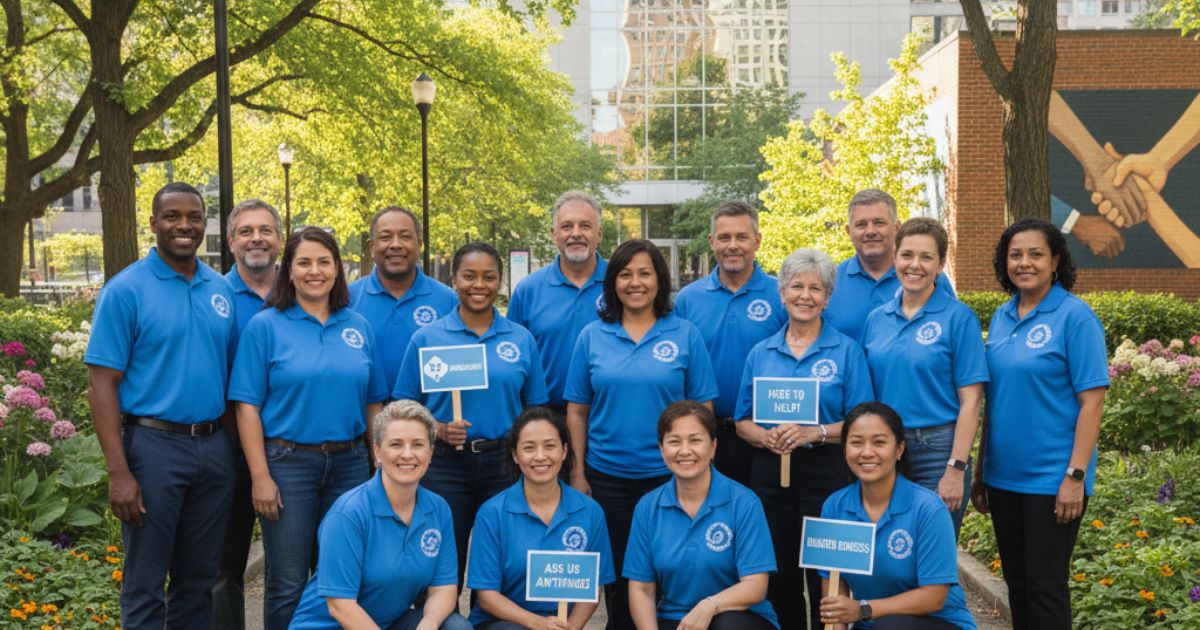Thriving online communities grow from the inside out. They don’t rely only on top-down leadership—they thrive when passionate community ambassadors take initiative. These dedicated members act as advocates, mentors, and connectors who represent your brand values and inspire others to participate. A well-structured community ambassador program helps increase engagement, build loyalty, and strengthen relationships.
This post will guide you through the process of recruiting, onboarding, empowering, and rewarding ambassadors to drive sustainable, member-led growth. Whether you’re managing a brand community, social media group, or online forum, these strategies will help you build a vibrant and engaged community.
What Is a Community Ambassador?
A community ambassador is a dedicated member who goes above and beyond the basic level of participation. They:
- Serve as a liaison between leadership and other members
- Moderate discussions, answer questions, and resolve issues promptly
- Promote events, share success stories, and welcome newcomers
- Provide feedback and insights to help shape community strategy
Rather than volunteer moderators or paid staff, ambassadors bridge the gap between enthusiasts and organizers, giving peer-level credibility that fosters trust and deeper participation.
Why Invest in Community Ambassadors?

Ambassadors can drive exponential benefits for your community:
- Scalable Engagement: As active members, ambassadors distribute the workload of greeting new arrivals, moderating chats, and spearheading discussions without draining central resources.
- Authentic Advocacy: Peer recommendations carry more weight than branded messaging. Ambassadors share genuine experiences and success stories that resonate with prospects.
- Deeper Insights: Immersed in day-to-day interactions, ambassadors surface emerging needs, concerns, and trends, feeding valuable intelligence back to leadership.
- Sustained Momentum: By forming micro-leadership teams, ambassadors spark local meetups, online challenges, and special interest groups that keep activities fresh and members returning.
How to Recruit and Select Ambassadors
Not every active user makes an ideal ambassador. Follow these steps to build a strong selection process:
- Define Criteria: Clarify the traits you value—consistent participation, positive attitude, subject-matter expertise, empathy, and communication skills.
- Solicit Nominations: Ask current members and staff to recommend standout contributors. Peer-nominated ambassadors often have built strong social capital.
- Issue an Application: Create a simple form to gauge passion, availability, and ideas. Ask candidates how they’d promote events or resolve conflict.
- Interview or Trial: Host short live calls or give a one-week trial to test responsiveness, tone, and reliability in real scenarios.
- Make Selections Transparently: Announce chosen ambassadors publicly, share a brief profile, and thank all applicants to maintain goodwill.
Onboarding and Training Ambassadors
A polished onboarding sets ambassadors up for success. Your program should include:
- Welcome Kit: Provide brand guidelines, discussion policies, and templates for common tasks (e.g., welcoming new members, moderating Q&A sessions).
- Training Sessions: Host live or recorded workshops on tools, best practices for conflict resolution, storytelling techniques, and community values.
- Peer Mentoring: Pair new ambassadors with veterans to shadow real conversations, receive feedback, and build confidence.
- Resource Library: Maintain a shared folder with FAQs, escalation procedures, event calendars, and design assets for social posts.
Defining Roles & Responsibilities
Clarity avoids burnout and conflict. Typical ambassador duties include:
- Onboarding: Welcome newcomers, guide them to key channels and resources, and address their initial questions.
- Moderation: Enforce community guidelines, de-escalate debates, and flag serious issues to staff.
- Content Creation: Host AMAs, write mini-blogs, or create polls that spark interaction.
- Event Support: Assist in planning virtual or in-person meetups, webinars, and workshops.
- Feedback Loop: Collect surveys, gather testimonials, and summarize member sentiment for leadership meetings.
Designing Incentives and Rewards
Ambassador programs thrive when leaders show appreciation. Consider these incentives:
- Exclusive Access: Early previews of product features, private strategy calls, or dedicated Slack channels with decision-makers.
- Swag and Merch: Custom badges, t-shirts, stickers, or digital avatars that signal status within the community.
- Monetary or Point Systems: Gift cards, affiliate commissions, or redeemable points for each event hosted or milestone achieved.
- Public Recognition: Feature ambassadors in newsletters, blog posts, or social media shout-outs to boost their personal brand.
- Learning Opportunities: Scholarships, conference tickets, or skill-training courses that align with their professional goals.
Measuring Ambassador Impact
Track both quantitative and qualitative metrics to evaluate success:
- Engagement Uplift: Compare post volumes, thread replies, and reaction counts before and after ambassador activities.
- New Member Conversion: Monitor sign-up rates attributed to ambassador referrals or welcome interactions.
- Sentiment Analysis: Use surveys and text analysis tools to measure community satisfaction scores and tone shifts.
- Event Attendance: Review registration and live-attendance rates for ambassador-led events versus general assemblies.
- Retention Rates: Track how long members stay active after being onboarded by an ambassador.
Scaling and Sustaining Your Program

As your ambassador network grows, you’ll need systems to keep it running smoothly:
- Tiered Roles: Introduce junior, senior, and veteran tiers with escalating responsibilities and rewards.
- Leadership Council: Form an ambassador advisory board that meets monthly to co-design program enhancements.
- Automated Tools: Employ community-management platforms to assign tasks, track KPIs, and send reminders.
- Regular Feedback: Conduct quarterly pulse checks with ambassadors to iterate on training, incentives, and role clarity.
- Sunsetting Policies: Define clear offboarding steps for inactive or graduating ambassadors to maintain program health.
Conclusion
Community ambassadors transform ordinary members into active co-creators, helping your community grow and thrive. They amplify your reach, build trust, and create meaningful engagement that lasts. With the right community ambassador program, you can guide this energy through clear goals, proper training, thoughtful rewards, and ongoing performance tracking.
Start building your ambassador strategy today to empower your most dedicated supporters and enhance every aspect of your online community. When your members become ambassadors, engagement rises, loyalty deepens, and your community becomes a powerful force for growth.





